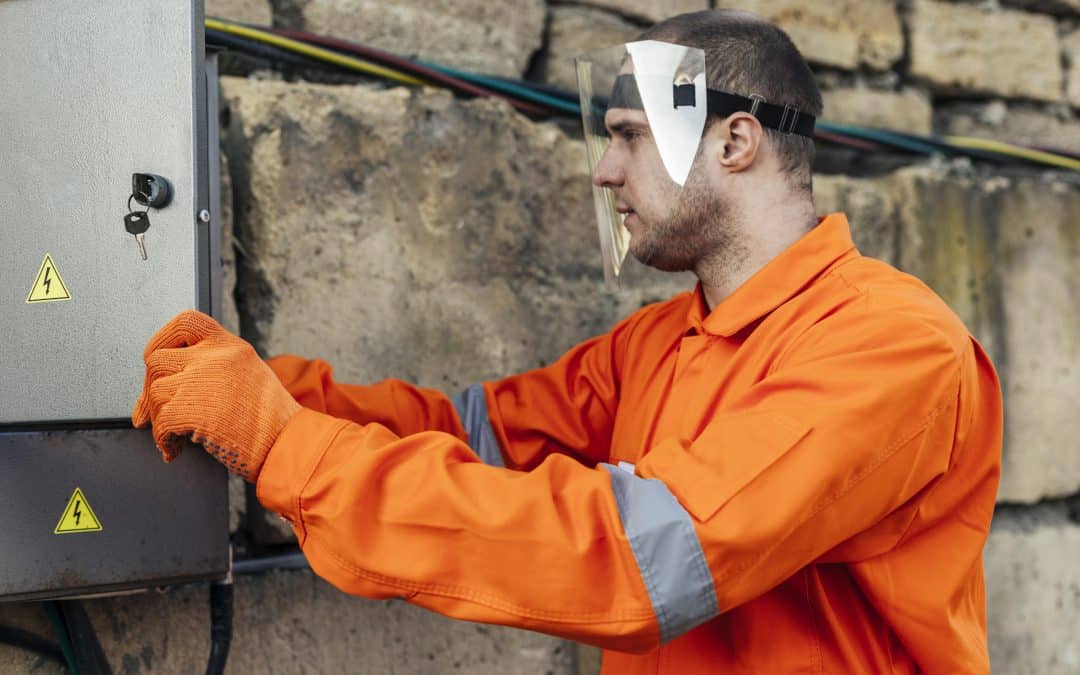In the world of trades and electrical work, there’s a hidden danger that often goes unnoticed until it’s too late – the arc flash hazard. This silent threat can have devastating consequences if proper precautions aren’t taken. In this article, we’ll explore what arc flash is, the importance of arc flash safety, and how you can protect yourself and your coworkers. We’ll also discuss Arc Flash training and certificate opportunities in Ontario and the guidelines provided by Ontario health and safety. So, buckle up, because your safety at work is at stake.
What is Arc Flash?
Arc flash, in simple terms, is an electrical explosion that can occur when there’s a sudden, unintended electrical discharge through the air. It’s like a burst of lightning, but in a confined space, and it can happen in the blink of an eye. When electrical systems or equipment fail, or when they’re not maintained properly, the built-up energy can discharge in an explosive manner, causing extreme heat, intense light, and a blast wave. This can result in severe injuries, burns, and even fatalities.
The Arc Flash Hazard
The arc flash hazard is a potential risk that everyone working with electricity should be aware of. This hazard is measured in terms of energy, often referred to as incident energy, which is the amount of energy generated during an arc flash incident. It’s typically measured in calories per square centimeter (cal/cm²). The higher the incident energy, the greater the risk to individuals in the vicinity.
The Importance of Arc Flash Safety
Arc flash safety isn’t just another workplace protocol; it’s a matter of life and death. Understanding and following arc flash safety procedures is crucial for your well-being and the safety of your coworkers. Here are some key reasons why arc flash safety should be a top priority:
- Personal Safety: The most obvious reason is your own safety. Arc flash incidents can cause severe burns, vision damage, and even death. Proper safety measures can significantly reduce the risks associated with these incidents.
- Protecting Others: Your actions also impact the safety of your coworkers. An arc flash incident doesn’t just affect the person working directly with the equipment; it can harm others nearby. Being well-prepared can protect your colleagues.
- Legal Obligations: In Ontario, employers have a legal obligation to provide a safe working environment under the Occupational Health and Safety Act. Ignoring arc flash safety regulations can lead to serious legal consequences for both employees and employers.
Arc Flash Training in Ontario
In workplaces where risk of this potential is higher than normal, it’s strongly encouraged that workers get Certified for Arc Flash, so they can be more aware of the potential hazards and preventive methods. This training helps provide valuable insights into the specific risks associated with electrical systems and shows workers how to develop specific safety protocols tailored to the needs of individual workplaces.
Ontario Health and Safety Guidelines
In Ontario, the Ministry of Labour, Training, and Skills Development sets guidelines and regulations related to arc flash safety through the Occupational Health and Safety Act. These guidelines aim to protect workers from hazards like arc flash. Some key points include:
- Risk Assessment: Employers are required to assess the risk of arc flash hazards in their workplaces.
- Training and Certification: Workers must receive proper training and certification to work with electrical systems safely.
- Personal Protective Equipment (PPE): Employers should provide appropriate PPE, such as arc-rated clothing, gloves, and face shields, to protect workers from arc flash incidents.
- Safe Work Practices: Safe work practices, such as de-energizing electrical systems when possible, should be followed to minimize the risk of arc flash.
- Warning Labels: Electrical equipment with arc flash hazards must be labeled to warn workers of the potential dangers.
Protecting Yourself from Arc Flash
Now that you understand the importance of arc flash safety, let’s look at some practical steps you can take to protect yourself and your coworkers:
- Education: Educate yourself about arc flash hazards and safety procedures. Valley WorkSafe offers online workplace safety training and certification courses on their website, www.valleyworksafe.ca/online-training.
- Risk Assessment: Always conduct a thorough risk assessment before working on electrical systems. Be aware of the potential hazards and take appropriate precautions.
- Use PPE: Wear the recommended personal protective equipment, including arc-rated clothing, gloves, and face shields, when working near electrical systems.
- Safe Work Practices: Follow safe work practices and procedures, such as de-energizing equipment before maintenance and testing.
- Maintain Equipment: Ensure that electrical systems are well-maintained and regularly inspected to prevent failures that could lead to arc flash incidents.
- Labels and Signs: Pay attention to warning labels and signs on electrical equipment. They provide essential information about potential hazards.
- Team Communication: Communicate with your coworkers about the risks and safety measures. Ensure everyone is on the same page and follows safety protocols.
Conclusion
Arc flash hazards are a serious threat in the world of trades and electrical work. Ignoring safety procedures can lead to catastrophic consequences. It’s your responsibility to protect yourself and your coworkers by adhering to the guidelines set by Ontario health and safety regulations.
To further enhance your knowledge and skills in arc flash safety, consider enrolling in this and other online workplace safety training and certification courses offered by Valley WorkSafe. Most courses can be finished in under 5 hours and provide you with the valuable resources and expertise to help you stay safe on the job. Remember, your safety matters, and it’s worth the effort to ensure that you and your team members go home safe and sound after a hard day’s work. Stay informed, stay safe, and make arc flash safety a top priority in your workplace.
Watch Our Safety Videos Here : https://www.youtube.com/@valleyworksafe

